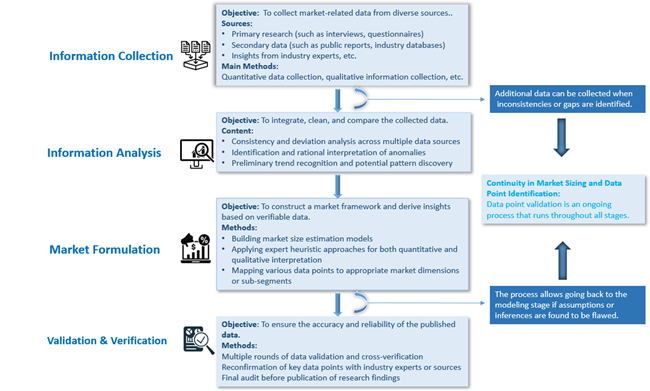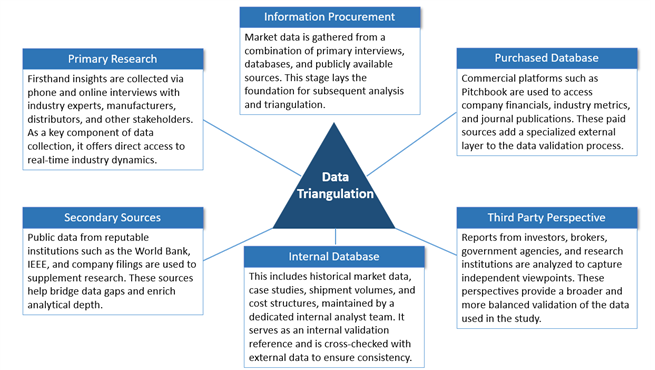Polyolefin elastomer (POE) is essentially a random copolymer of ethylene and an α-olefin, with the α-olefin content generally no less than 20%. Due to its unique two-phase microstructure, POE combines the high elasticity of rubber with excellent thermoplastic processing properties. The emergence and development of POE are closely linked to the application of metallocene catalysts and the advancement of solution polymerization technology.
Structurally, POE mainly consists of a crystalline region of the carbon-carbon backbone (resin phase) and an amorphous region (rubber phase). The crystalline region of the carbon-carbon backbone serves as physical crosslinking points, while the introduction of α-olefins weakens the crystallinity of the backbone, forming an amorphous region that exhibits rubber-like elasticity. POE features a short branch distribution, granting it high elasticity, high strength, and high elongation. The copolymers polymerized using metallocene catalysts have narrow molecular weight distributions, reducing warpage during injection molding and extrusion, and ensuring low water vapor permeability. Saturated molecular bonds give POE excellent heat aging and UV resistance. The rubber phase provides elasticity, while the resin phase ensures good processability.
Currently, polyolefin elastomers are mainly classified into ethylene-propylene copolymers and ethylene/α-olefin copolymers. The former includes binary ethylene-propylene rubber (EPM) and ternary ethylene-propylene-diene rubber (EPDM). The latter includes ethylene/α-olefin random copolymers (POE) and ethylene/α-olefin block copolymers (OBC).
According to α-olefin content, polyolefins are divided into polyolefin plastomers (POP) and polyolefin elastomers (POE). POP contains 10–20% α-olefin with a relative density of 0.870–0.915, suitable for blown film, extrusion, and cast film heat-seal layers, applied in food packaging, hygiene products, elastic films, and personal care. POE contains more than 20% α-olefin with a relative density of 0.865–0.895, more suitable for modification applications, such as blending with PP/PE to improve toughness and transparency, with EVA foams to enhance compression recovery, or with PA/PT to improve impact resistance. POE is also widely used in photovoltaic encapsulant films, reducing potential-induced degradation (PID) in PV modules and extending cell lifetime.
A high proportion of α-olefins is essential for POE's excellent performance. Generally speaking, higher α-olefin content improves POE's mechanical properties, and longer comonomer branches contribute to a greater reduction in product density. In industrial applications, ethylene/1-octene offers the best combined elastic properties and is currently the mainstream POE product type. The following is a comparison of the similarities and differences in performance between LLDPE, POP, and POE:
|
Feature |
LLDPE |
POP |
POE |
OBC |
|
Catalyst |
Z-N catalyst, Metallocene catalyst |
Metallocene catalyst |
Metallocene catalyst |
New non-metallocene catalyst |
|
Polymerization Process |
Solution, Gas-phase, etc. |
High-temperature solution polymerization |
High-temperature solution polymerization |
Solution polymerization |
|
Density (g/cm³) |
0.915–0.940 |
0.890–0.915 |
0.860–0.890 |
0.860–0.880 |
|
Microstructure |
Random copolymer, high crystallinity |
Between LLDPE and POE |
Random copolymer, crystalline/amorphous two-phase coexistence |
Block copolymer, two-phase structure |
|
α-Olefin Content |
3%–11% |
Between LLDPE and POE |
15%–45% |
— |
Market Overview:
According to LookWhole Insight, the global Polyolefin Elastomer (POE) market is projected to reach USD 3611.11 Million in 2024. It is expected to grow to USD 6711.83 Million by 2033, registering a compound annual growth rate (CAGR) of 7.13% during the forecast period (2025–2033). - LookWhole Insight
Industry Chain
Upstream, POE mainly relies on bulk raw materials such as petroleum and coal. Thanks to its elasticity, strength, aging resistance, weather resistance, and water barrier properties, downstream applications include automotive components and modified plastics. Photovoltaic-grade POE is mainly used in PV modules, especially for TOPCon, HJT, and perovskite cells. Other downstream applications span household appliances, electronics, construction, daily-use products, and footwear.
POE production is catalyzed by metallocene catalysts for ethylene and α-olefin polymerization. Key polymerization technologies include Dow’s solution polymerization process and ExxonMobil’s high-pressure polymerization. High-carbon α-olefins, metallocene catalysts, and high-temperature solution polymerization are the main barriers for POE production. The metallocene catalyst is the core material for POE polymerization.
Globally, the largest downstream consumption of POE is automotive lightweight materials, accounting for 55% of demand, followed by modified plastics (29%) and wire & cable (10%). From a technology perspective, the fastest-growing downstream sectors are expected to be photovoltaic encapsulants and automotive materials. As PV module technology advances, encapsulation materials are continuously upgraded. Although POE films have excellent performance, their relatively high cost currently makes EPE films a short-term alternative. With domestic production of POE, prices are expected to fall, accelerating substitution of EVA films and driving high POE demand. Similarly, rising automotive production and the demand for lighter vehicles are expected to sustain POE demand, especially given its current low penetration (only 20% of domestic bumper materials use POE), indicating large future market potential in the automotive sector.
The following are the applications of POE in modified materials:
|
Application |
Base Material |
Processing Method |
Functional Purpose |
|
Automotive |
PP |
Injection molding, Extrusion |
Impact resistance, Heat resistance, Transparency, Flexibility |
|
Industrial |
PP |
Injection molding |
Impact resistance, Transparency |
|
EVA |
Wire coating |
Flexibility, Elongation, Scratch resistance |
|
|
Cables |
PP |
Wire coating |
Balance of flexibility and wear resistance |
|
Plastic Molds |
EP |
Injection molding, Extrusion |
Impact resistance |
|
Footwear |
EVA |
Compression, Injection molding |
Weight reduction, Compression resistance |
|
Packaging |
PE |
Blow molding, Casting |
Adhesion, Transparency, Elongation |
Key Development Trends
1. New Technology Iteration in Photovoltaic Modules
At the cell level, N-type cells are structurally similar to traditional P-type cells, with material differences mainly in silicon wafers and silver paste. P-type cells use P-type wafers with small amounts of silver paste; N-type cells use N-type wafers with more silver paste. Perovskite cells differ significantly from silicon-based cells, using metal halide semiconductors in layered structures, including TiO₂ dense layers, TiO₂ mesoporous layers, perovskite layers, and HTM layers.
At the module level, material differences mainly involve encapsulants and glass. Traditional P-type modules use EVA films; N-type modules use POE or EPE films. P-type PV glass is single or double glass, N-type uses double glass, and perovskite modules use TCO conductive glass. In perovskite cells, the heterojunction interface between the electron transport layer and perovskite layer is less stable, prone to oxygen vacancies, accelerated degradation, and electric field imbalance, requiring higher-performance encapsulants to ensure cell stability.
Overall, the share of POE particles in encapsulant films is expected to increase. (1) N-type cells require higher conversion efficiency; their theoretical maximum efficiency is higher than P-type, and they are more sensitive to PID on the illuminated surface. (2) Higher cell power increases module heating and temperature, demanding better thermal and aging resistance from encapsulants. These trends favor POE demand growth.
2. Metallocene Catalysts Become Key
Looking forward to 2024–2025, during the vacuum period of domestic POE resin capacity, supply tightness will intensify. Given the difficulty in overcoming POE’s key technical barriers, only a limited number of companies are expected to successfully commission industrial-scale production. Many planned projects may lag or fail due to technical challenges, resulting in significant uncertainty in overall industry capacity. Industrial-scale production of metallocene catalysts is the most technically challenging, giving companies that lead in metallocene catalyst development a competitive advantage in industrialization.
Global Polyolefin Elastomer (POE) Market: Competitive Landscape
From the supply side, the production technology and industrial-scale facilities for POE resin are currently concentrated among six major overseas chemical giants: Dow Chemical, LG Chem, Mitsui Chemicals, SSNC (a joint venture between SABIC and SK), ExxonMobil, and Nordic Chemicals. Each company’s production facilities are based on proprietary polymerization technology and metallocene catalysts, with a combined installed capacity of approximately 2.5 million tons per year. Considering that production lines can flexibly switch to POP (polyolefin plastomers), OBC (olefin block copolymers), or other elastomers, the actual POE production capacity is lower than publicly reported figures.
Dow Chemical is the world’s largest and most technologically advanced POE producer, with four production facilities in the U.S., Thailand, and Saudi Arabia, totaling 1.16 million tons per year, accounting for about 50% of the global market. LG Chem, SSNC, and Mitsui Chemicals follow closely, each with capacities exceeding 200,000 tons per year.
Meanwhile, Chinese companies are rapidly expanding capacity and are expected to become a significant global player in the POE market by 2025. Petrochemical companies across China are launching POE projects with a planned total capacity of 3.6 million tons per year. Currently, Wanhua Chemical is relatively advanced in industrialization, having successfully started a pilot plant in March 2021, with the first 200,000-ton-per-year industrial-scale facility expected to come online in the second half of 2024. Additionally, Shenghong Silbang and Sinopec Maoming Petrochemical completed pilot testing in 2022 and are currently constructing industrial-scale facilities, while other projects remain in the early planning stages.
The following is the 2021 global POE production capacity structure (by company):
Report Framework and Key Highlights:
Market Dynamics: Identification of major market drivers, restraints, opportunities, and challenges.
Trend Analysis: Examination of ongoing and emerging trends impacting the market.
Competitive Landscape: Detailed profiles and market positioning of major players, including market share, operational status, product offerings, and strategic developments.
Strategic Analysis Tools: SWOT Analysis, Porter’s Five Forces Analysis, PEST Analysis, Value Chain Analysis
Market Segmentation: By type, application, region, and end-user industry.
Forecasting and Growth Projections: In-depth revenue forecasts and CAGR analysis through 2033.
This report equips readers with critical insights to navigate competitive dynamics and develop effective strategies. Whether assessing a new market entry or refining existing strategies, the report serves as a valuable tool for:
Industry players
Investors
Researchers
Consultants
Business strategists
And all stakeholders with an interest or investment in the Polyolefin Elastomer (POE) market.
Global Polyolefin Elastomer (POE) Market: Segmentation Analysis and Strategic Insights
This section of the report provides an in-depth segmentation analysis of the global Polyolefin Elastomer (POE) market. The market is segmented based on region (country), manufacturer, product type, and application. Segmentation enables a more precise understanding of market dynamics and facilitates targeted strategies across product development, marketing, and sales.
By breaking the market into meaningful subsets, stakeholders can better tailor their offerings to the specific needs of each segment—enhancing competitiveness and improving return on investment.
Global Polyolefin Elastomer (POE) Market: Market Segmentation Analysis
The research report includes specific segments by region (country), manufacturers, Type, and Application. Market segmentation creates subsets of a market based on product type, end-user or application, Geographic, and other factors. By understanding the market segments, the decision-maker can leverage this targeting in the product, sales, and marketing strategies. Market segments can power your product development cycles by informing how you create product offerings for different segments.
|
ATTRIBUTE |
Details |
|
|
Time Coverage |
Historical Year: 2020– 2024 Base Year: 2024 Estimated Year: 2025 Forecast Year: 2025 - 2033 |
|
|
Market Segmentation |
||
|
By Type |
POE-α POE-β Others |
|
|
By Application |
Automotive Photovoltaics Building and Construction Consumer Goods Hygiene and Packaging Other |
|
|
By Company |
Dow Chemical Company ExxonMobil Chemical Company LG Chem Ltd. Mitsui Chemicals, Inc. SSNC Borealis AG Wanhua Chemical Group Co., Ltd. Chambroad Petrochemical Co., Ltd. Satellite Chemical Co., Ltd. Rongsheng Petrochemical Co., Ltd. Oriental Energy & Chemical Group Co., Ltd. Dingjide Petrochemical Co., Ltd. Chengzhi Shareholding Co., Ltd. Maoming Petrochemical Co., Ltd. Wison New Materials Co., Ltd. |
|
|
By Region |
North
America |
|
Report Framework and Chapter Summary
Chapter 1: Report Scope and Market Definition
This chapter outlines the statistical boundaries and scope of the report. It defines the segmentation standards used throughout the study, including criteria for dividing the market by region, product type, application, and other relevant dimensions. It establishes the foundational definitions and classifications that guide the rest of the analysis.
Chapter 2: Executive Summary
This chapter presents a concise summary of the market’s current status and future outlook across different segments—by geography, product type, and application. It includes key metrics such as market size, growth trends, and development potential for each segment. The chapter offers a high-level overview of the Polyolefin Elastomer (POE) Market, highlighting its evolution over the short, medium, and long term.
Chapter 3: Market Dynamics and Policy Environment
This chapter explores the latest developments in the market, identifying key growth drivers, restraints, challenges, and risks faced by industry participants. It also includes an analysis of the policy and regulatory landscape affecting the market, providing insight into how external factors may shape future performance.
Chapter 4: Competitive Landscape
This chapter provides a detailed assessment of the market's competitive environment. It covers market share, production capacity, output, pricing trends, and strategic developments such as mergers, acquisitions, and expansion plans of leading players. This analysis offers a comprehensive view of the positioning and performance of top competitors.
Chapters 5–10: Regional Market Analysis
These chapters offer in-depth, quantitative evaluations of market size and growth potential across major regions and countries. Each chapter assesses regional consumption patterns, market dynamics, development prospects, and available capacity. The analysis helps readers understand geographical differences and opportunities in global markets.
Chapter 11: Market Segmentation by Product Type
This chapter examines the market based on product type, analyzing the size, growth trends, and potential of each segment. It helps stakeholders identify underexplored or high-potential product categories—often referred to as “blue ocean” opportunities.
Chapter 12: Market Segmentation by Application
This chapter analyzes the market based on application fields, providing insights into the scale and future development of each application segment. It supports readers in identifying high-growth areas across downstream markets.
Chapter 13: Company Profiles
This chapter presents comprehensive profiles of leading companies operating in the market. For each company, it details sales revenue, volume, pricing, gross profit margin, market share, product offerings, and recent strategic developments. This section offers valuable insight into corporate performance and strategy.
Chapter 14: Industry Chain and Value Chain Analysis
This chapter explores the full industry chain, from upstream raw material suppliers to downstream application sectors. It includes a value chain analysis that highlights the interconnections and dependencies across various parts of the ecosystem.
Chapter 15: Key Findings and Conclusions
The final chapter summarizes the main takeaways from the report, presenting the core conclusions, strategic recommendations, and implications for stakeholders. It encapsulates the insights drawn from all previous chapters.
About US
LookWhole Insight is a global leader in data analytics and market research, offering deep insights into industries, economies, and consumer behavior across the world. We deliver comprehensive data and analysis on thousands of products and services, making us the first choice for organizations pursuing growth and exploring untapped, blue ocean markets.
Our offerings include syndicated research reports, customized research solutions, and strategic consulting services. The LookWhole Insight database is trusted by prestigious academic institutions and Fortune 500 companies alike, providing a robust foundation to navigate both global and regional business environments. Our data spans 26 industries across 35 key economies, backed by thousands of metrics and detailed analyses.
As an independent provider of global business intelligence, we empower clients with market analysis and consumer insights that range from local to global, and from tactical to strategic. Our research solutions guide critical decisions on when, where, and how to scale your business with confidence.
Email: market@lookwhole.com
www.lookwholeinsight.com






